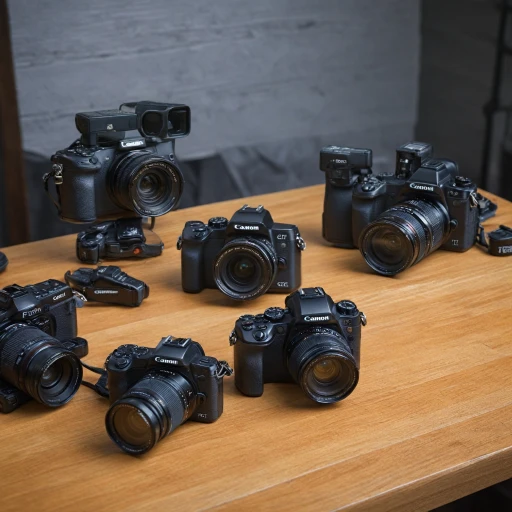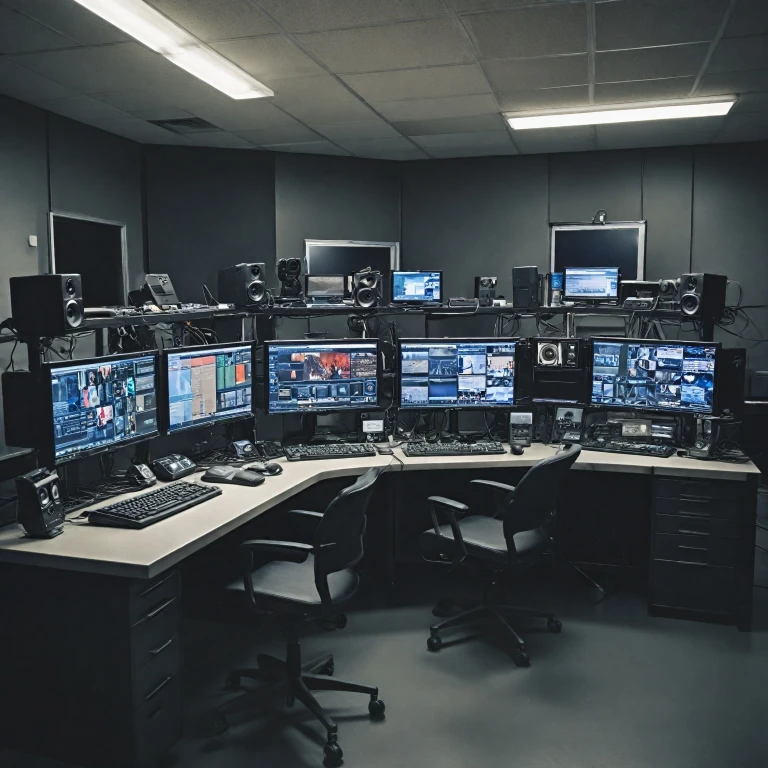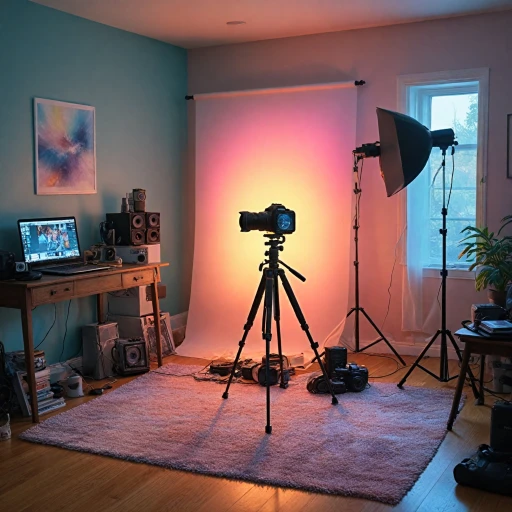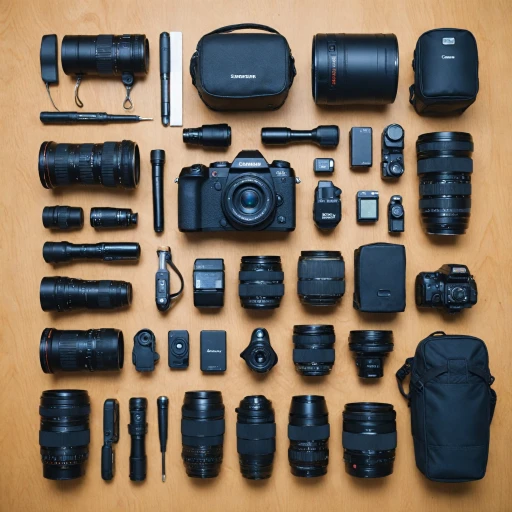
What is an xdcam station?
Introduction to the XDCAM Station
The XDCAM Station is a pivotal addition to the workflow of media professionals, functioning as a central hub for managing, storing, and transferring video files. Developed by Sony, this media station offers a host of advanced features that cater to the high demands of video production and broadcasting environments. An XDCAM Station is essentially a sophisticated media storage and management system. It is designed to facilitate the processing and organization of video files recorded on professional media formats such as SxS memory cards and professional discs. The station supports high-speed file transfers, making it ideal for rapid data management in fast-paced media environments. Equipped with internal storage options, the XDCAM Station ensures that media files are not only readily accessible but also securely archived. By integrating seamlessly with existing workflows, this media station helps professionals streamline their content management process, from recording to post-production. Sony's XDCAM technology is renowned for its reliability and efficiency, providing broadcasters and production houses with a robust solution for handling large volumes of video and audio data. The station's ability to connect and work harmoniously with other production equipment further enhances its utility. For those looking to learn more about integrating photography equipment into their current media setup, understanding how to use additional tools like a phone adapter for spotting scopes could be beneficial. This knowledge complements the functionality of an XDCAM Station by expanding the creative possibilities available to media professionals.Key Features of the xdcam station
Understanding Essential Features of the xdcam Station
The xdcam station offers a suite of features that cater specifically to the needs of media professionals seeking efficiency and versatility in video production. One of the primary characteristics that sets the xdcam station apart is its comprehensive support for different recording media variants. Given Sony's influence in the professional media space, the xdcam station is well-equipped to handle Sony's professional disc and SxS formats, ensuring high-speed data processing and robust reliability.
This media station boasts substantial internal storage capabilities, which are crucial for managing large-scale video files. Coupled with the capability for high-speed file transfers, the xdcam station allows seamless access to content, reducing downtime and enhancing productivity. The station's internal disc drive also supports xdcam disc formats, providing flexibility for varied professional workflows.
In terms of compatibility, the xdcam station works well with content browser software, allowing for streamlined management and editing of video and audio content. This ease of use promotes a more efficient xdcam workflow, particularly for tasks that involve managing layers of video and audio tracks.
The station's technological specs also include professional-level recording in varying Mbps levels, catering to different project requirements. Additionally, the inclusion of a pin female connector facilitates integrations with other professional items such as Blackmagic Design products. This aspect is crucial for media professionals working on projects in diverse locales, like island shoots, that demand reliable and versatile equipment.
In sum, these features underscore the xdcam station's status as an indispensable tool for modern video production. For further insights into the necessary equipment that complements the xdcam station, see our guide on think tank camera bags.
Benefits for Media Professionals
Advantages for Media Experts
Having the right tools is crucial for media professionals, and the xdcam station offers numerous benefits that cater to the demanding needs of the industry. Whether you are working on expansive projects or dealing with intricate audio and video details, these stations are designed to streamline your workflow. Firstly, with high-speed file transfer capabilities, the xdcam station allows for efficient movement of large video and audio files. This ensures minimal downtime between shoots and editing, making it an invaluable asset in fast-paced production environments. Additionally, the support for diverse media types such as professional disc, sxs memory, and internal storage, provides flexibility in managing your media content. The xdcam station also supports high-quality video recording, with the capability of capturing stunning footage up to 50 mbps. Moreover, leveraging high performance xdcam workflow aspects, the station intricately integrates with both software solutions like Blackmagic Design and Sony's content browser. This compatibility ensures seamless integration across multiple platforms, allowing for a cohesive creative process. From an audio perspective, the xdcam station doesn’t falter. It supports multi-layer audio recording, capturing clear and professional sound quality. Audio processing and management become intuitive, especially when combined with xds professional functionality. Finally, maintenance of xdcam stations is systematic and user-friendly, with elements like pin female connectors enhancing connectivity and station durability. Understanding the landscape of these media stations can significantly amplify your production potential. For further guidance on setting up your gear, consider exploring choosing the perfect film camera bag.Integrating the xdcam station into Your Workflow
Streamlining Your Workflow with XDCAM Station
Integrating the XDCAM station into your media production workflow can be a game-changer. This robust device, renowned for its high speed and professional-grade capabilities, simplifies the management and transfer of media files, an essential task for any professional eager to optimize their time and resources. One of the primary advantages of the XDCAM station is its versatility, as it supports various formats such as SxS memory cards, professional discs, and even internal storage solutions. These options provide flexibility depending on your needs, allowing you to manage content seamlessly, from recording to editing. Further, the media station facilitates enhanced file transfer and storage capabilities. The incorporation of an internal disc drive and professional disc support allows for quick recording and retrieval of media items at high Mbps, crucial for high-demand environments like broadcasting and film production.Enhanced Integration for Professional Environments
The XDCAM station also offers superior compatibility with Sony's extensive software suite, including the content browser and other tools that support XDCAM file formats. These utilities provide comprehensive editing and management features that integrate neatly with Blackmagic Design hardware, creating a powerful editing island setup. Moreover, features like Blackmagic audio support and multi-layer recording expand the XDCAM station's functionality, accommodating the complexities of modern audio and video production. Sony XDS professional models bolster the integration further by providing network capabilities, allowing professionals to work across different locations effortlessly. In conclusion, by incorporating an XDCAM station into your workflow, you are not merely investing in a piece of equipment but fundamentally enhancing your media production capacity. As the landscape of media technology evolves, staying updated with devices like the XDCAM station ensures that your team remains at the cutting edge of professional media production, prepared for future trends and innovations.Comparing xdcam station Models
Evaluating the Range of xdcam Station Models
Choosing the right xdcam station model is crucial for media professionals looking to optimize their video production and storage workflows. Sony, a leader in the xdcam universe, offers a variety of models to cater to different needs, ranging from basic collections to sophisticated recording systems.When comparing xdcam stations, it's vital to pay attention to specific features:
- Internal Storage: Different models come with varying internal storage capacities. Some xds stations are equipped with extensive storage options, allowing for a large volume of professional media file management.
- Disc Drive and Media Compatibility: Models may include professional disc drives and support for various media formats, such as the popular sxs memory cards. Ensuring compatibility with your current media is paramount.
- File Transfer Capabilities: High-speed file transfer is essential for efficient media workflows. Look for stations that offer robust file transfer rates to keep up with demanding production schedules.
- XDCAM Professional and Audio Supports: Advanced models support xdcam professional audio and video recording, crucial for high-quality output and post-production edits.
Moreover, newer models often come with updated software and support for cutting-edge technologies, such as Blackmagic Design integration and enhanced content browsing features. The ability to incorporate these technologies can significantly improve the flexibility and efficiency of your xdcam workflow.
While choosing the right model, take into account potential future trends and innovations in xdcam technology. Investing in a station that can adapt to advancements will ensure long-term value and usability within your professional projects.
Future Trends and Innovations in xdcam Technology
Anticipated Advancements and Technological Innovations in XDCAM
As the world of professional media continues to evolve rapidly, the xdcam station is poised for several exciting advancements. Beloved for its robust file management capabilities and high-speed video processing, xdcam technology consistently pushes boundaries. Here’s a glimpse of the future:- Enhanced High-Speed Connectivity: With next-gen developments, expect improved data transfer speeds. Future xdcam models may utilize advancements in connection technology, offering faster connectivity for seamless file transfer across media stations and devices.
- Intelligent Storage Solutions: Anticipated improvements in internal storage will likely support larger capacities and smarter archiving features. For instance, advanced AI-driven file management systems could simplify storage tasks, sorting through vast collections of video, audio, and disc items efficiently.
- Improved Recording Capabilities: Future iterations of the xdcam station might feature improved recording layers that enhance both video and audio quality. This innovation not only benefits media professionals but also supports an ever-growing demand for higher mbps in video recording.
- Comprehensive Eco-system Integration: Looking ahead, we can expect stronger integration with professional media ecosystem products, such as those from Sony XDCAM and Blackmagic Design. Such integration will likely enrich the existing workflow, making it even more seamless and versatile.
- Software Advancements: Software upgrades could introduce sophisticated tools within the content browser, enhancing user experience by providing intuitive and powerful controls over the media station. Potential collaborations with third-party software providers could further expand capabilities.










